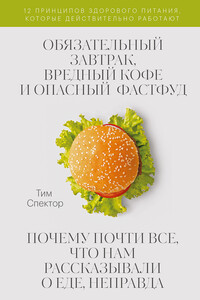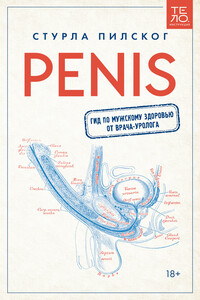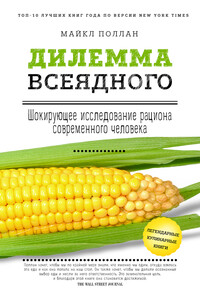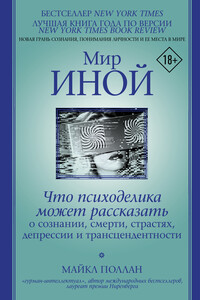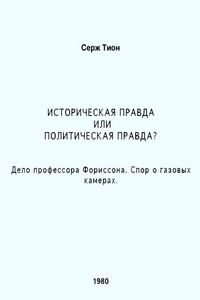Глава 3. Ешьте в основном растения
Berry, Wendell. “The Pleasures of Eating,” in What Are People For? (New York: North Point Press, 1990).
Berry, Wendell. “The Reactor and the Garden,” in The Gift of Good Land (San Francisco: North Point Press, 1981). Здесь речь идет о значимости садоводства.
Brillat-Savarin, Jean-Anthelme. The Physiology of Taste. Translated by Anne Drayton (London: Penguin, 1994).
Cutler, David M., et al. “Why Have Americans Become More Obese?” Journal of Economic Perspectives. 17.3 (2003): 93–118.
Geier, Andrew B., and Paul Rozin, et al. “Unit Bias: A New Heuristic That Helps Explain the Effect of Portion Size on Food Intake.” Psychological Science. 17.6 (2006): 521–525.
Hartman, Harvey, and Jarrett Paschel. “Understanding Obesity: Practical Suggestions for the Obesity Crisis” (Bellevue, WA: The Hartman Group, Inc., 2006).
Katz, Sandor Ellix. The Revolution Will Not Be Microwaved (White River Junction, VT: Chelsea Green, 2007).
Montanari, Massimo. Food Is Culture (New York: Columbia University Press, 2006).
Petrini, Carlo. Slow Food Nation (New York: Rizzoli Ex Libris, 2007). Более подробную информацию о движении Slow Food вы найдете на сайте www.Slowfood.com.
Petrini, Carlo. “Terra Madre Opening Speech.” Turin, Italy. October 20, 2004.
Pollan, Michael. “Cruising on the Ark of Taste.” Mother Jones (May, 2003).
Rozin, Paul, et al. “The Ecology of Eating: Smaller Portion Sizes in France Than in the United States Help Explain the French Paradox.” Psychological Science. 14.5 (2003): 450–454.
Rozin, Paul, et al. “Food and Life, Pleasure and Worry, Among American College Students: Gender Differences and Regional Similarities.” Journal of Personality and Social Psychology. 85.1 (2003): 132–141.
Wansink, Brian. Mindless Eating: Why We Eat More Than We Think (New York: Bantam Books, 2006).
О сокращении количества потребляемых калорий:
Civitarese, Anthony E. “Calorie Restriction Increases Muscle Mitochondrial Biogenesis in Healthy Humans.” Public Library of Science. 4.3 (2007): 0485–0494.
“Eat Your Cake and Have It” (New York: Nature Publishing Group, 2006).
Fontana, Luigi. “Excessive Adiposity, Calorie Restriction, and Aging.” Journal of the American Medical Association. 295.13 (2006): 1577–1578.
Heilbronn, Leonie K., et al. “Effect of 6-Month Calorie Restriction on Biomarkers of Longevity, Metabolic Adaptation, and Oxidative Stress in Overweight Individuals.” Journal of the American Medical Association. 295.13 (2006): 1539–1548.
Meyer, Timothy E., et al. “Long-Term Caloric Restriction Ameliorates the Decline in Diastolic Function in Humans.” Journal of the American College of Cardiology. 47.2 (2006): 398–402.
Seligman, Katherine. “Iron Will.” San Francisco Chronicle (September 2, 2007).
Об употреблении алкоголя и французском парадоксе:
Criqui, M.H., and Brenda L. Ringel. “Does Diet or Alcohol Explain the French Paradox?” The Lancet. 344 (1994): 8939–8940.
Drewnowski, Adam, et al. “Diet Quality and Dietary Diversity in France: Implications for the French Paradox.” Journal of the American Dietetic Association. 96.7 (1996): 663–669.
Ferrieres, Jean. “The French Paradox: Lessons for Other Countries.” Heart. 90 (2004): 107–111.
Fuchs, Flavio D. “Vascular Effects of Alcoholic Beverages: Is It Only Alcohol That Matters?” Hypertension. 45 (2005): 851–852.
Mukamal, Kenneth J., et al. “Roles of Drinking Pattern and Type of Alcohol Consumed in Coronary Heart Disease in Men.” New England Journal of Medicine. 348.2 (2003): 109–118.
Opie, Lionel H., and Sandrine Lecour. “The Red Wine Hypothesis: From Concepts to Protective Signalling Molecules.” European Heart Journal. 28 (2007): 1683–1693.
Renaud, S., and M. de Lorgeril. “Wine, Alcohol, Platelets, and the French Paradox for Coronary Heart Disease.” The Lancet. 339.8808 (1992): 1523–1526.
Rimm, E. “Commentary: Alcohol and Coronary Heart Disease – Laying the Foundation for Future Work.” International Journal of Epidemiology. 30 (2001): 738–739.
Volatier, Jean-Luc, and Philippe Verger. “Recent National French Food and Nutrient Intake Data.” British Journal of Nutrition. 81.S2 (1999): 57–59.
